What's New
Displaying results 2331 - 2340 of 4052
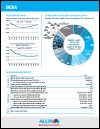
Resource | Fact Sheets,
India fact sheets on estimated number of adolescents living with HIV 2013. The fact sheets provide information on adolescent HIV trends, distribution of adolescent AIDS-related deaths, HIV treatment for adolescents, adolescent knowledge, testing and behavior related to HIV and adolescent key population.
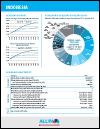
Resource | Fact Sheets,
Indonesia fact sheets on estimated number of adolescents living with HIV 2013. The fact sheets provide information on adolescent HIV trends, distribution of adolescent AIDS-related deaths, HIV treatment for adolescents, adolescent knowledge, testing and behavior related to HIV and adolescent key population.
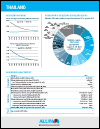
Resource | Fact Sheets,
Thailand fact sheets on estimated number of adolescents living with HIV 2013. The fact sheets provide information on adolescent HIV trends, distribution of adolescent AIDS-related deaths, HIV treatment for adolescents, adolescent knowledge, testing and behavior related to HIV and adolescent key population.

Resource | Presentations,
International AIDS Assistance 2014 slideshow
Prepared by
The Kaiser Family Foundation

Resource | Presentations,
Asia Pacific Intergovernmental Meeting on HIV and AIDS
Bangkok, Thailand
29 January 2015
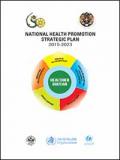
Resource | Publications,
The National Health Promotion Strategic Plan (NHPSP) for Bhutan is a first of its kind in the history of health system of Bhutan. The strategic plan document seeks to provide policy makers, health promoters, educators and other stakeholders with a broad strategic framework for development and strengthening of health promotion within the health sector and sectors across government, private and civil society organisations over the period 2015-2023.
The document provides the current health situation in Bhutan, NHPSP’s vision, mission and goals and objectives. The document is based on the five key strategic areas of (i) Health in All Policies (HiAPs), (ii) Capacity Building, (iii) Healthy Settings, (iv)Targeted Interventions for Priority Health Concerns and (v) Innovation for Sustainability. The each of the strategic area is targeted to foster positive processes for health promotion approaches through inter-sectoral collaboration, capacity building, sustainable and healthy settings/interventions, legislation and regulation to support health promotion across all sectors.
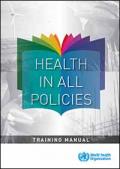
Resource | Tools,
The purpose of this manual is to provide a resource for training to increase understanding of Health in All Policies (HiAP) by health and other professionals.
The training manual target audience is universities, public health institutes, non-governmental organizations, training institutions in government and intergovernmental organizations. The training is structured to target professionals from middle to senior levels of policy-making and government from all sectors influencing health. These include health, employment, housing, economic development, finance, trade, environment and sustainability, social security, education, agriculture and urban planning. Depending on the content, it would also be advisable to include participants from civil society.
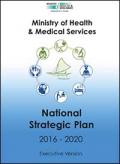
Resource | Publications,
The National Strategic Plan (NSP) is the primary guiding document supporting our efforts to improve health and is an invaluable resource to keep us focused and on track over the next five years.
The National Strategic Plan 2016-2020 has been developed to align with the Government's priorities for the health sector, the global post 2015 development agenda, and the United Nations Sustainable Development Goals, which builds upon the Millennium Development Goals that preceded them. The "Healthy Islands" (HI) vision of the Pacific has also been considered as one of the key frameworks in developing this document. Based on the HI vision MoHMS has initiated the "Wellness Fiji" approach that forms the basis for reorientation of Fiji's Primary Health Care (PHC) delivery towards reaching people in the various "settings" in which they live, work and play and through expanded partnerships between peripheral health workers and local communities. Many of the themes that are highlighted in these development frameworks are cross-cutting and thus are integrated throughout the NSP.
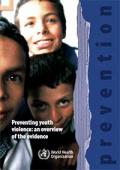
Resource | Publications,
Each year an estimated 200 000 youth aged 10–29 years are murdered, making homicide the fourth leading cause of death in young people globally. In addition to these deaths, millions of young people sustain violence-related injuries that require emergency medical treatment, and countless others go on to develop mental health problems and adopt high-risk behaviours such as smoking, alcohol and drug abuse, and unsafe sex as a result of their exposure to youth violence. The emotional toll of youth violence on its victims, their loved ones and friends is high, and youth violence shatters lives. These consequences also have high economic costs, both for society and for the families of those affected.
The aim of this manual is to help policy-makers and planners everywhere – particularly in settings with limited human and financial resources – to address youth violence using an evidence-informed approach. The manual provides a science-based framework for understanding why some individuals are more likely to become involved in youth violence than others and why youth violence is more concentrated in particular communities and sectors of the population than in others. This framework incorporates a life-course approach that recognizes how behaviour in the present is shaped by earlier developmental stages. It also takes into account how youth violence is influenced by characteristics of the individual; family and peer relationships; and features of the community and society, such as economic inequality and high levels of alcohol consumption.
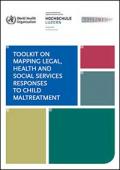
Resource | Tools,
There is widespread agreement that in order to make progress on child maltreatment it is important for policy-makers to have information on its scope and characteristics, often referred to by the public health term “epidemiology”. Researchers around the world have typically responded to this need using community surveys to count the prevalence of child maltreatment in the general population. Hundreds of such studies have been done in dozens of countries and other jurisdictions.
The goal of this toolkit is to provide researchers with more information on methodological strategies and considerations when conducting agency studies on child maltreatment to increase the use and success of this kind of research in countries and jurisdictions around the globe. Such research may then lead to more structured agency data collection systems to inform practice in the area of child maltreatment.





